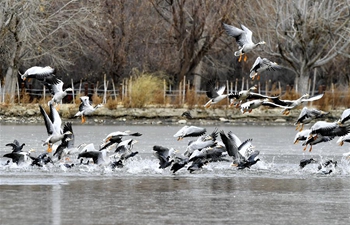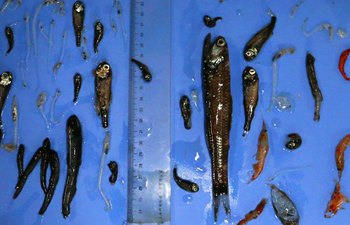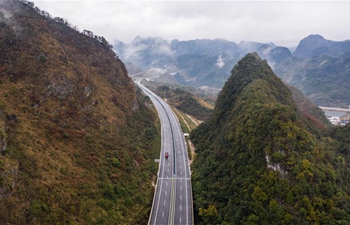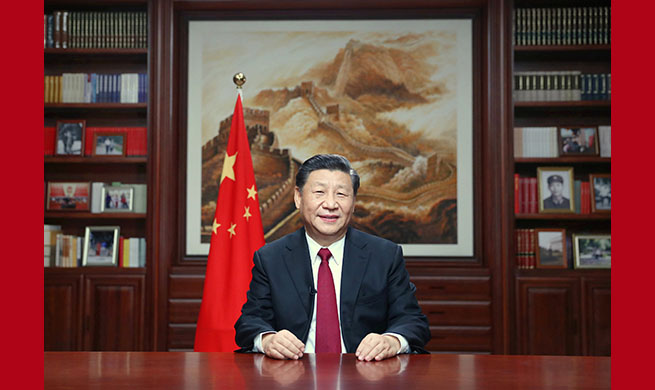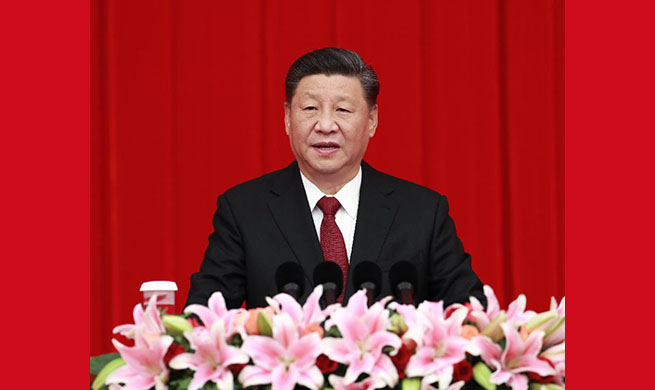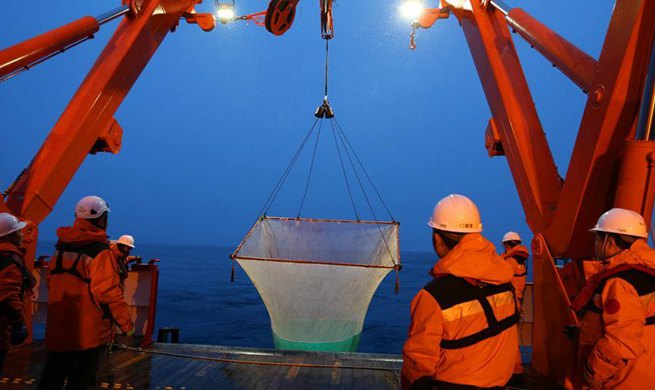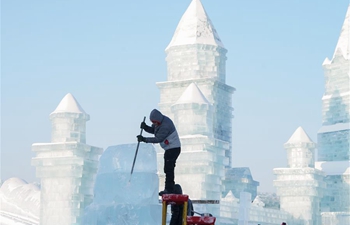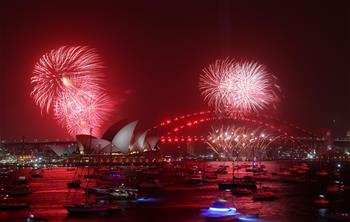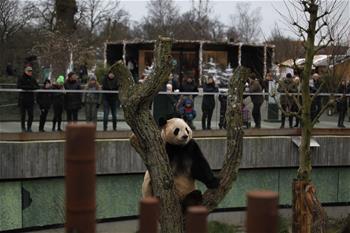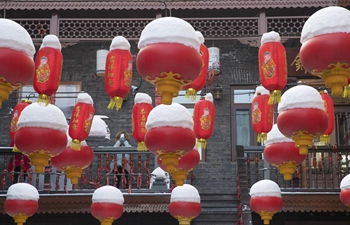CHONGQING, Jan. 2 (Xinhua) -- Dongting Hotpot, a restaurant that has called Yuzhong District of southwest China's mountainous city of Chongqing home for more than three decades, is always packed with spicy food aficionados.
Rebuilt from a wartime air-raid shelter, the eatery attracts countless visitors who travel hundreds of miles from across the country just to have a taste of the local cuisine in the underground cave. The unique structure makes the place cool in summer and warm in winter.
"In summer, the temperature inside is about 10 degrees Celcius cooler than it is outdoors, as if we turned on natural air-conditioning," said Deng Hong, owner of the restaurant.
Once used to offer local residents refuge from enemy bombing during the war against Japanese invaders, the air-raid shelters in Chongqing have been given a new lease of life as a modern "underground city."
An exhibition hall commemorating Chongqing's civil air defense opened to the public last week, showcasing some 1,680 cultural relics.
As the 10th member of the Jianchuan Museum Cluster, China's largest private museum complex, the exhibition hall was constructed out of a former bomb shelter.
Standing in front of the war relic, 81-year-old Wang Bangli, who survived the indiscriminate bombing of Chongqing in the late 1930s and 1940s, said his house was burnt down and his mother's eyes were wounded.
"People had nowhere to hide but inside the shelters," Wang recalled.
By killing and injuring more than 32,000 residents, the bombing of Chongqing and its nearby cities is regarded as one of the most horrific atrocities committed by Japanese invaders during the Chinese People's War of Resistance Against Japanese Aggression.
Chongqing started to construct air-raid shelters just as Japan initiated its full-fledged invasion of China in July 1937. Historical records show that the shelters could accommodate 600,000 people with a total area of 1.1 million square meters by the end of the war.
"There are many cities in China that have air-raid shelters, but in terms of sheer scale, Chongqing is peerless," said Fan Jianchuan, founder and curator of the museum.
Yet the air-raid shelters were much more than wartime sanctuaries.
"Back then, people in Chongqing not only lived in the shelters, but produced war supplies," Fan said, noting that the underground refuges served as workshops where hundreds of thousands of light weapons were made and sent to the front lines.
After the war, some shelters were repurposed into museums, stores and garages, even becoming an ideal summer resort for the locals.
They have provided nearly 25,000 underground parking spots in the commercial area of the Jiefang Monument in downtown Chongqing, according to local authorities.
In Yuzhong District, a former air-raid shelter has been turned into a wine cellar with a unique ventilation system that offers cool breezes for clientele.
"Vintage reds require strict storage conditions, and the shelter ticks all the boxes," said the manager of the cellar.
As the harrowing wartime experience fades further into memory, Chongqing's sprawling "underground city" is playing a bigger role in contemporary times.
"The spiritual torch of the gritty, tenacious Chongqing people and their perseverance should be passed on by the air-raid shelters," Fan said.




